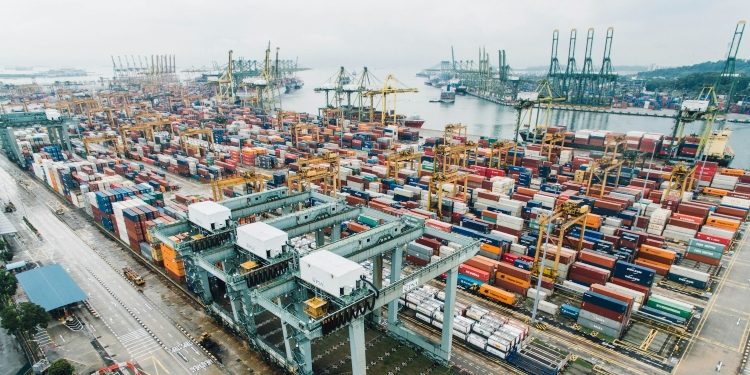When it comes to importing and exporting goods, or even transporting items across EU and UK borders, the best way to ensure that everything is taken care of properly is to use the Goods Vehicle Movement Service, otherwise known as GVMS.
This system works alongside the Customs Handling of Import and Export Freight system (CHIEF) and the Customs Declarations Service (CDS) to ensure that any and all goods with pre-lodged declarations will be released as soon as they arrive on UK soil. GVMS was introduced in 2021 by the HMRC to create a more streamlined process for goods clearance and ensure that vehicle details and declarations are properly outlined for ports.
What is a GVMS system?
The GVMS system takes the Movement Reference Numbers (MRNs) of pre-lodged declarations for shipments and compiles them into a single Goods Movement Record (GMR). This will detail the licence plate of the trailer, truck, or delivery vehicle, the shipping route, and the carrier and departure/arrival times. GMR is a one-time-use-only reference number that defines single-crossing details for the vehicle in question. Hauliers will need to present this to the goods carrier in order to prove that all goods in transit are in receipt of pre-lodged declarations.
Gvms also has applications when regarding digital Offices of Transit, where regulations ask that goods be presented at the necessary customs portal. This will typically occur at the border when shipments enter countries. GVMS is often used for its digital capabilities and won’t require physical representation at the point of contact.
How does the GVMS system work?
GVMS is the verification system used for GMRs to quickly determine that the record matches the vehicle. In the event of incorrect or invalid details, hauliers won’t be able to check-in or continue their journey. Those confirmed will gain automatic clearance for goods in the CHIEF system and with the CDS upon boarding at the EU destination. This way, UK import declarations can be undertaken in real time by the HMRC in preparation for arrival.
Systems will be updated to inform the necessary departments of goods embarking and will be marked as such, sending electronic notifications across to the correct portals stating that inbound goods have passed conventions and have been properly cleared.
There may be instances where GVMS will note that transportation requires inspection, and in these cases, the vehicle will be asked to stop by a customs inspection centre when arriving to undertake checks and gain clearance. The GVMS system will be updated once customs are satisfied with compliance.
How to get a GMR
Anyone hauling or delivering goods across the UK and the EU (or the business responsible for shipping goods) will need to obtain a GMR. This will be necessary whether they are importing or exporting goods or even passing through destinations while transporting products/produce elsewhere. Each shipment will need a new GMR, so the HMRC asks the relevant parties to create an account and register for the GVMS to simplify operations.
When moving goods across borders, it can be difficult to know exactly what you need to have on hand or what information will be required for safe passage, so enlisting the help of a broker can be a worthwhile idea. Experts such as https://www.otsbroker.com/gvms are highly knowledgeable on the subjects of GVMS, GMRs and so much more, so don’t hesitate to reach out for advice or assistance today.
David Prior
David Prior is the editor of Today News, responsible for the overall editorial strategy. He is an NCTJ-qualified journalist with over 20 years’ experience, and is also editor of the award-winning hyperlocal news title Altrincham Today. His LinkedIn profile is here.













































































